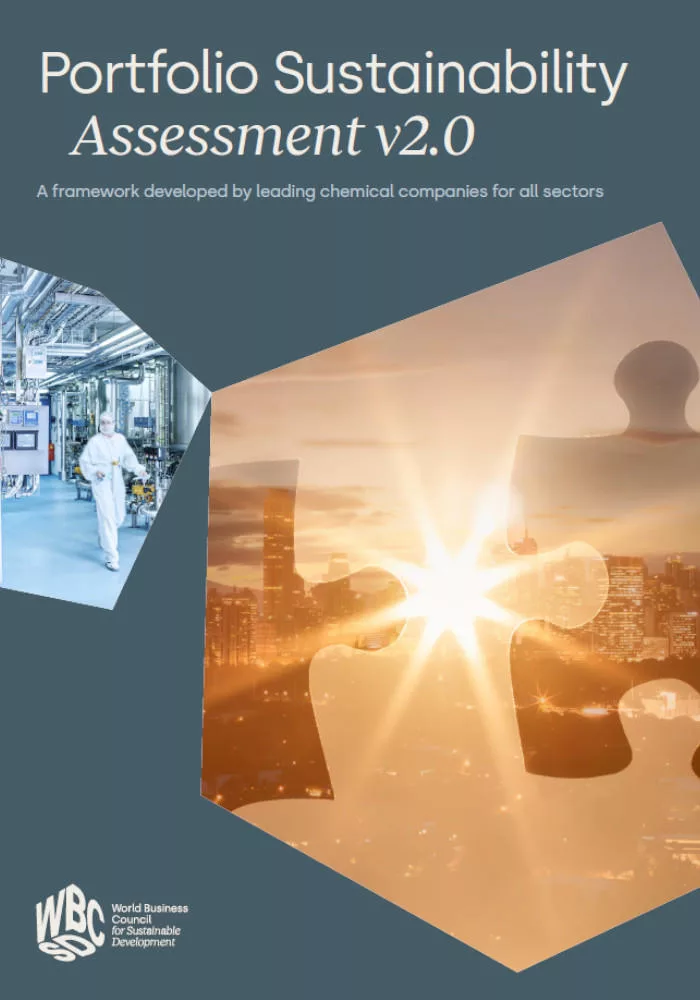Portfolio Sustainability Assessment v2.0
A framework developed by leading chemical companies for all sectors.
Published: September 7, 2023

Back in 2018, Portfolio Sustainability Assessment (PSA) was launched as a framework for chemicals companies to develop portfolio sustainability management methodologies and processes. Used by companies and their value chain, PSA offers all chemical intensive sectors an evidence-based framework to capture increasing stakeholders expectations, turn socio environmental risks into business opportunities and foster companies portfolio transformation. It is applicable to existing products & services as well as innovation projects.
Building on the experience and ambitions of the WBCSD members behind the PSA framework, this 2nd edition brings best practices on applying PSA for innovation, a stepped approach to embed circularity in portfolio assessments, and guidance to strengthen product stewardship.
Ilham Kadri, CEO, Solvay: “Sustainability is our license to operate. It has to inform any decision we are making in business development, strategy, innovation, capital expenditure, and M&A. Among the tools we are using, the Sustainable Portfolio Management (SPM), a methodology aligned with the WBCSD PSA framework, is our compass to grow our business AND be good for people and the planet. I’m proud that in the past six years, the growth of our sustainable solutions has been 5% higher than the average sales growth of our portfolio. And I’m confident SPM will help us reach our holistic Solvay One Planet goals, which address Climate, the Nature, and the Better Life dimensions.”
Xenia-Beyrich-Graf, Senior Vice President Specialties and Bioscience Research, BASF: “Our TripleS methodology, aligned with WBCSD PSA, is an integral part of our company’s sustainability steering for the existing portfolio as well as for our future solutions from R&D. Since 2012, TripleS acts as an early warning indicator, ensuring that our new solutions perform above and beyond regulatory minimum requirements and substantially contribute to a sustainable future. This methodology update strengthens the framework with regards to up-coming regulatory changes and stakeholders sustainability ambitions fostering strategic growth with respective solutions.”